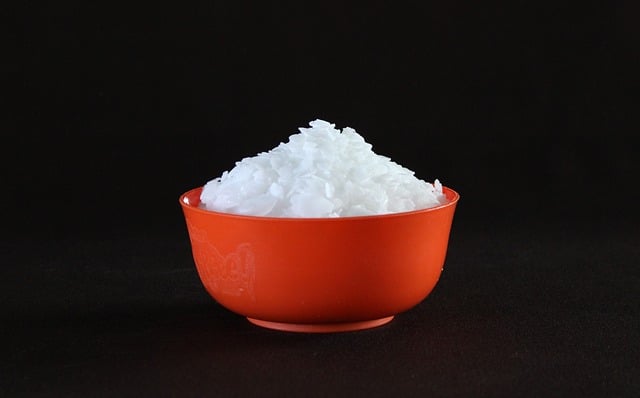
Caustic soda has several uses, such as making soap.
The Greek word kaíein , which can be translated as “burn” , derived from kaustikós . The notion came to Latin as caustĭcus , which is the closest etymological antecedent of the term caustic .
Burn and damage organic tissues
Caustic is defined as something that, due to its properties, can burn and damage organic tissues . The handling of caustic substances, therefore, is dangerous since contact of said products with the skin causes injuries .
For example: “Be careful with that cleaner because it is caustic: do not forget to use it with gloves” , “Disinfection is very important but you have to be careful with the caustic components” , “A caustic spill on the road put the authorities on alert ” .
Caustic soda
Sodium hydroxide or sodium hydroxide is known, depending on the region, as caustic soda or caustic soda . It is used to produce soap , make detergents and unclog pipes, to name a few possibilities.
Caustic soda, at room temperature, appears as a white, odorless solid that has the ability to absorb moisture. If it is dissolved in water, a large release of heat is generated.
caustic potash
Potassium hydroxide or caustic potash is another chemical compound that is used in different areas and is corrosive . Potassium soap is made with caustic potash. Other names by which this compound is known are potash , potassium hydrate , and potash lye .
Regarding their risks to humans, we can divide them into categories:
* ingestion : if ingested, it can cause permanent problems, such as burns to the esophagus, in addition to reacting negatively when coming into contact with stomach acid. In the worst cases, it can cause the death of the individual;
* inhalation : just inhaling it represents a danger . If the dose is very high, the damage may be irreversible. Regarding inhalation that extends over time, the potential effects are not known;
* direct contact : can burn the skin and eyes, and even cause irreversible blindness.
In optics
In the field of optics , the surface adjacent to the rays that are refracted or reflected is called caustic. The curve formed by light rays that are tangent is also called caustic.
caustic words
Something caustic, finally, is offensive , sarcastic or biting : “The caustic response of the interviewee made the journalist uncomfortable” , “I am fed up with your caustic comments and your constant irony” , “The artist's caustic sayings generated a great stir” .
In the first example, the nature of the words that the interviewee chooses to respond to the journalist manages to make him uncomfortable, since he uses daring language, which leaves the comfort zone expected by the media and manages to provoke a reaction . Sarcasm or bitingness in these cases can be very productive if it is used for a genuine purpose, such as fighting for a cause such as corruption, poverty or violence.

Caustic speech can be offensive, sarcastic or biting.
The second sentence shows us an excerpt from a conversation in which the sender expresses to his interlocutor that he cannot stand the type of comments he usually makes, in addition to his irony . Although in certain contexts this character can lead to progress in an issue of great importance, imprinting all our words with it can make a friendship relationship quite difficult due to the lack of relaxation .
Finally, we have another example in which it is a public person who decides to make caustic comments, and these cause a shock in their recipients. Whether it is a complaint about sexual harassment or salary inequality, or fraud in a contract, among other possible revelations, these are things that make the media and social networks react with special force.
